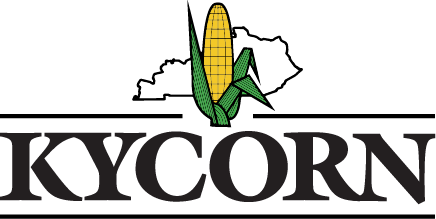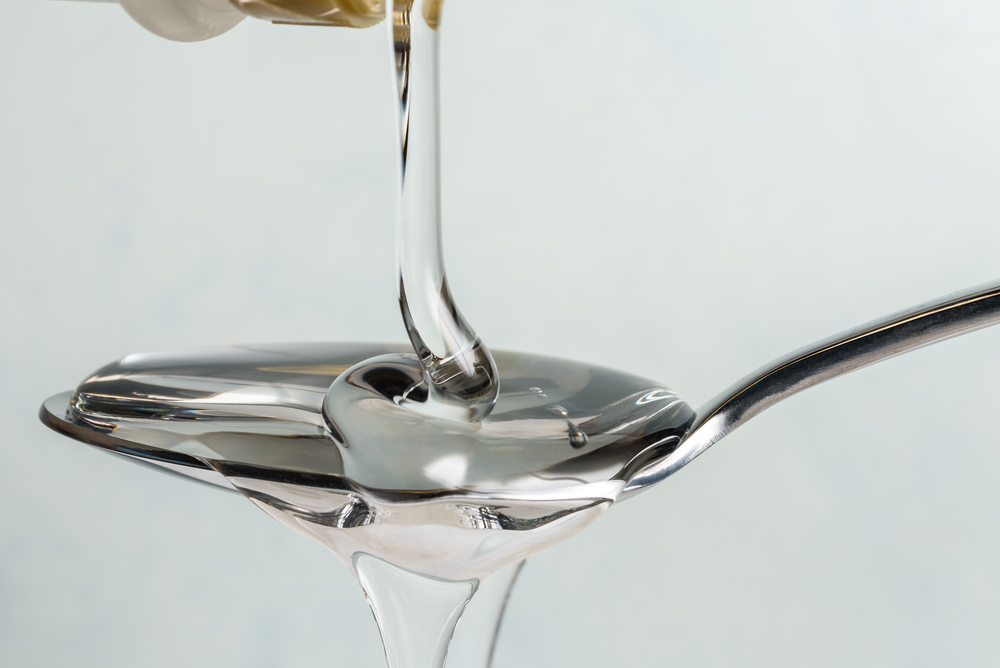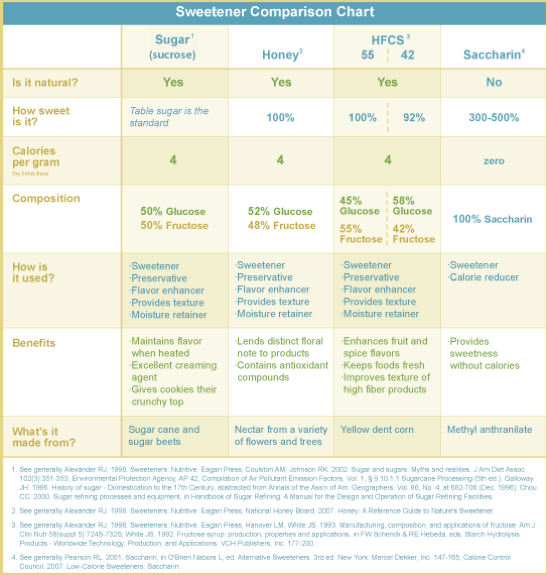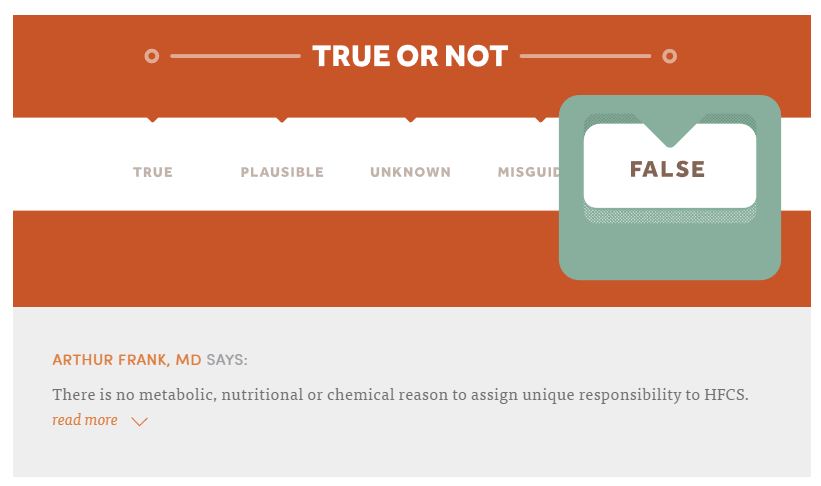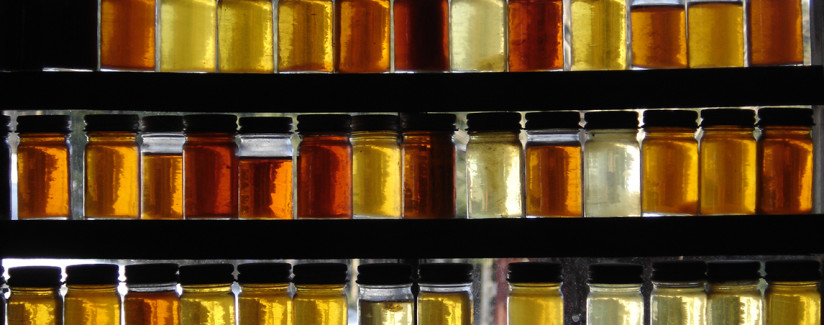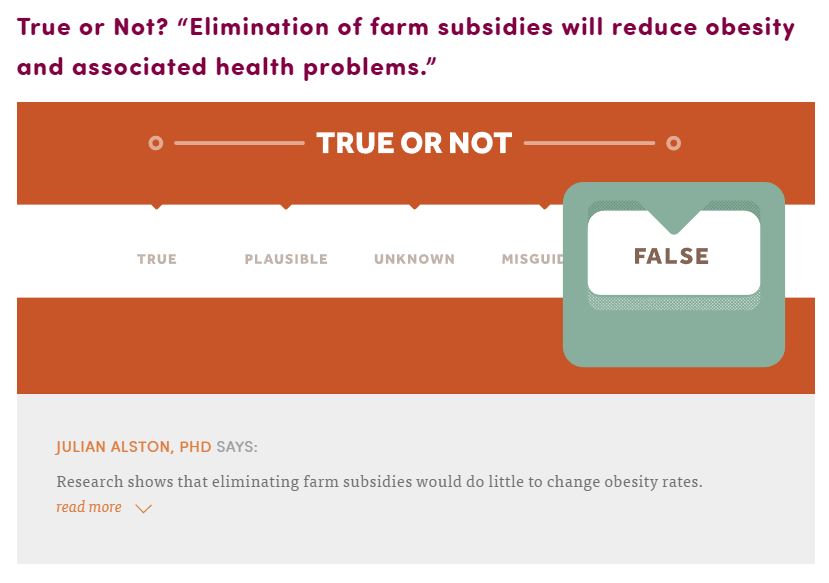Some love to call high-fructose corn syrup (HFCS) the subsidized, cancer- and obesity-causing food devil, but do those claims really have any merit? Or do these claims make great headlines?
We visited the Corn Refiners Association (CRA) and the Food and Drug Administration (FDA) for some background on the sweetener many people love to hate.
What is corn syrup?
Corn syrup is made from corn starch, which is found in the kernels (seeds). Starch is made up of a chain of glucose (a simple sugar) molecules joined together. The corn starch is broken into singular glucose molecules by adding water and enzymes produced from bacteria and fungus. If this already sounds horrifying to you, these enzymes may also be used in the production of other sweet syrups, such as maple and sorghum, to prevent crystallization. Honey bees also excrete an enzyme to their collected nectar which helps in the honey-making process.
The syrup created from the first enzyme process is pure glucose. To create a high fructose version, they add another enzyme. HFCS can be 55% fructose/45% glucose, or 42% fructose/58% glucose, depending on the sweetness desired. A high maltose corn syrup can also be created, but it is not as commonly used as HFCS.
Why are corn syrup used in place of sugar?
While economics and the cost/availability of ingredients does play a role, corn syrups are preferred over crystalized sugar (sucrose—50% glucose/50% fructose) for these reasons:
-
Provides texture and enhance “mouth-feel”
-
Acts as preservatives that protect the flavor, aroma and color of fruit used in jellies, jams and preserves
-
Helps brown baked foods
-
Provides fermentable sugars that help bread rise
-
Retains moisture so high fiber products taste better and baked goods stay fresh
-
Contributes to the bulk or volume of ice cream, baked goods, preserves and jams
-
Reduces the harsh vinegar or acid bite in non-sweet foods such as salad dressings, sauces and condiments
-
Controls freezing, melting and boiling points of products
How does HFCS compare to other sweeteners?
Source: Corn Refiners Association
Other HFCS Facts
The American Medical Association stated in June 2008 that “…high fructose syrup does not appear to contribute to obesity more than other caloric sweeteners…”
In 1983, the S. Food and Drug Administration (FDA) formally listed high fructose corn syrup as safe for use in food and reaffirmed that decision in 1996.
High fructose corn syrup is not sweeter than sugar; and high fructose corn syrup, sugar and honey all contain the same number of calories (four calories per gram).
Many confuse pure “fructose” with “high fructose corn syrup.” Recent studies that have examined pure fructose have been inappropriately applied to high fructose corn syrup and have caused significant consumer confusion. High fructose corn syrup never contains fructose alone, but always in combination with a roughly equivalent amount of a second sugar (glucose).
Learn more at https://corn.org/about-cra/faq/#HFCS.
Is HFCS less safe than other sweeteners?
FDA receives many inquiries asking about the safety of HFCS, often referring to studies about how humans metabolize fructose or fructose-containing sweeteners. These studies are based on the observation that there are some differences between how we metabolize fructose and other simple sugars.
The FDA is not aware of any evidence, including the studies mentioned above, that there is a difference in safety between foods containing HFCS 42 or HFCS 55 and foods containing similar amounts of other nutritive sweeteners with approximately equal glucose and fructose content, such as sucrose, honey, or other traditional sweeteners. The 2010 Dietary Guidelines for Americans recommend that everyone limit consumption of all added sugars, including HFCS and sucrose. FDA participated in the development of the Dietary Guidelines and fully supports this recommendation.
In the News:
True or Not: “High fructose corn syrup is a major cause of obesity in the United States.” – Best Food Facts, 11.06.2013
There is no dispute that weight management mandates decreasing the consumption of high calorie foods, particularly sweetened foods, and more so with beverages sweetened with sugar or HFCS. Nevertheless, there is no metabolic, nutritional or chemical reason to assign unique responsibility to HFCS. For weight management, it’s every bit as bad as sugar, but not worse.
Sweet Misconceptions: The Truth about High Fructose Corn Syrup and “Normal Sugar” – Best Food Facts, 06.20.2011
What we’ve learned, through talking with an esteemed expert on the subject, is that HFCS has gotten a bad rap and has been unfairly targeted. To set the record straight, we spoke with Dr. John White, M.D., Founder and President of WHITE Technical Research, and one of the leading experts in fructose and HFCS – the result of nearly 30 years of research on sweeteners. Read on for a biggest takeaways from our discussion.
